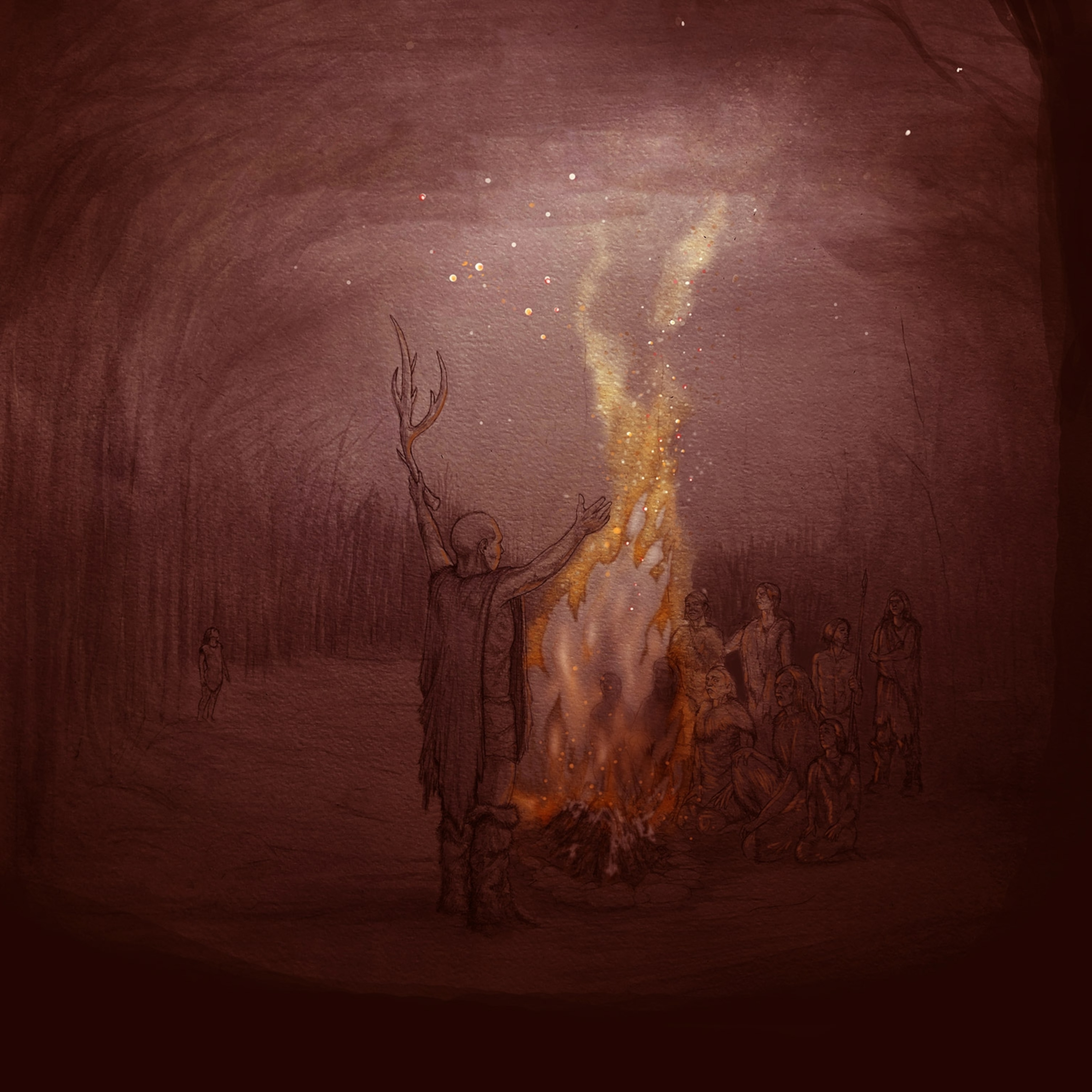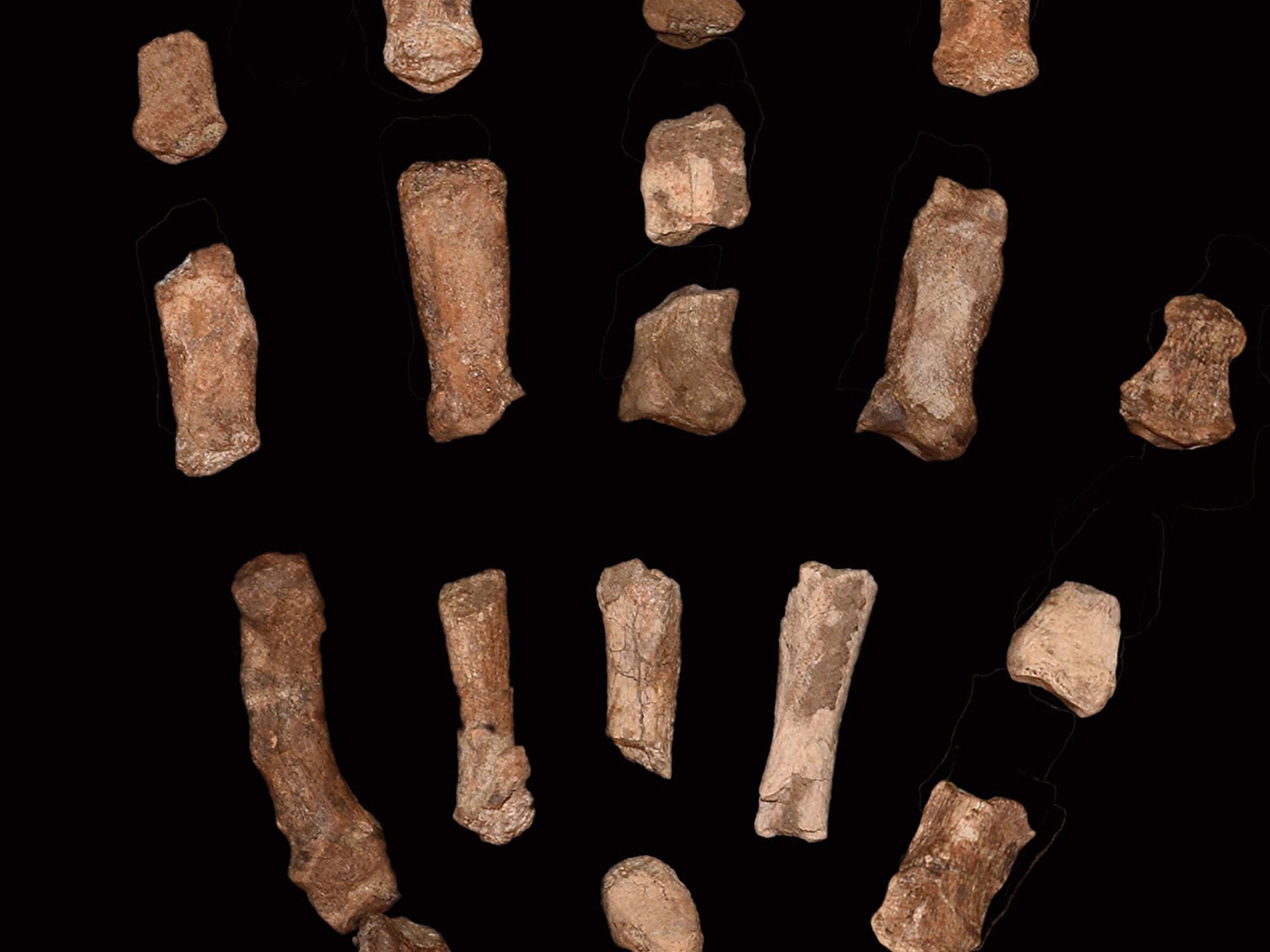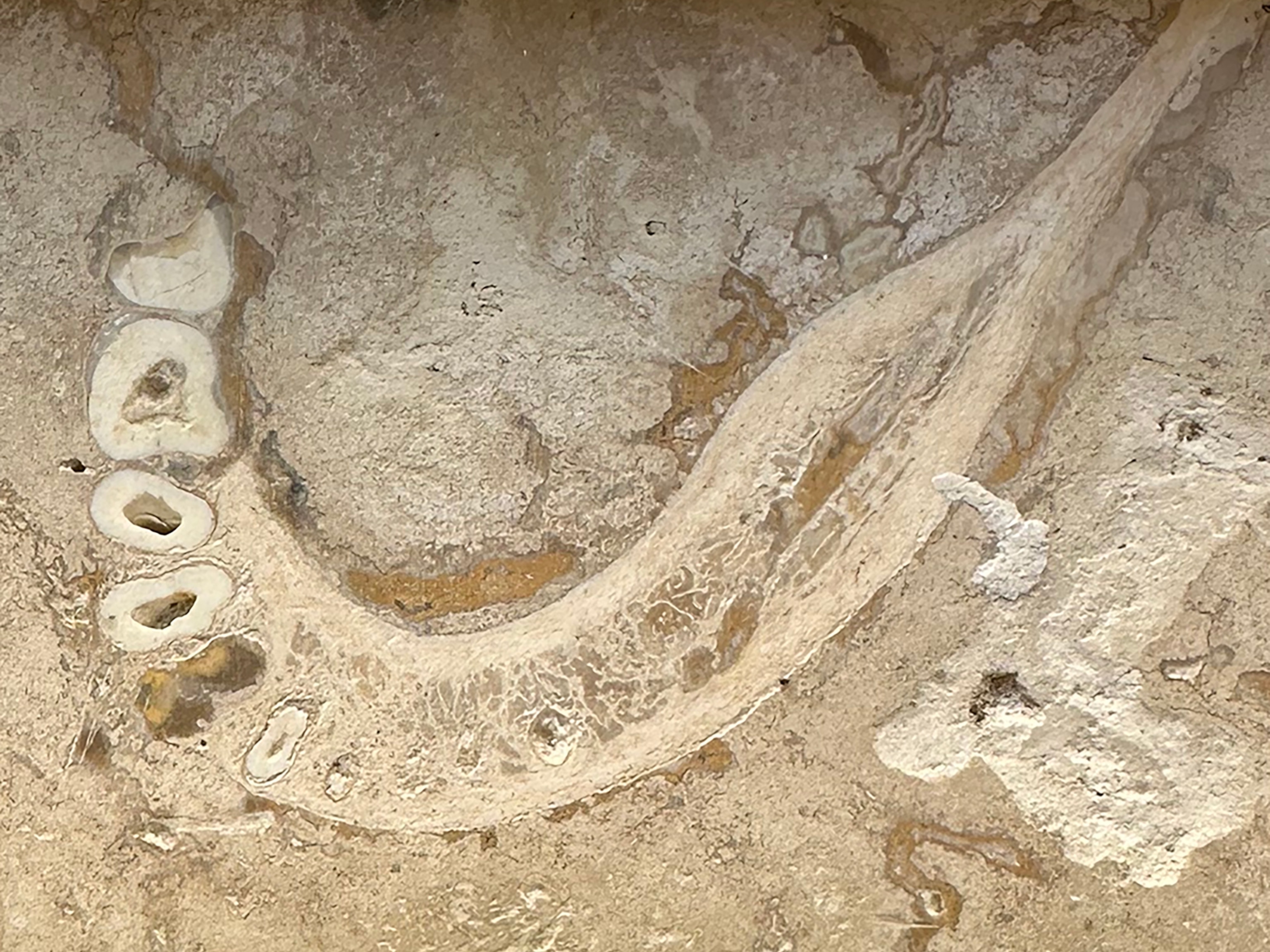
Ancient footprints hint at mysterious human relative with a strange walk
Long written off as bear tracks, prints at a site in Tanzania suggest early humans walked on two feet in surprisingly diverse ways. But questions abound.
Rain pattered in freshly laid volcanic ash across northern Tanzania some 3.66 million years ago. Before the ground had fully dried—the volcano perhaps still smoldering in the distance—a trio of ancient human relatives strolled across the damp sediments, casting their prints in the slowly cementing ash.
When the fossilized footprints were discovered in the 1970s, they shook the paleontology world. Left by the same species as the famed hominin relative Lucy, Australopithacus afarensis, the tracks were the first clear evidence of our early ancestors walking on two feet.
Now a fresh analysis of a set of long-forgotten prints nearby hints that these early humans weren't alone. If the scientists are right, a mysterious upright-walking hominin also left its mark in the ash.
"You can almost imagine them looking across the landscape seeing one another," says Ellie McNutt, a paleoanthropologist from Ohio University and lead author of a new study documenting the prints in the journal Nature.
British paleoanthropologist Mary Leakey led a team that discovered the five curious hominin-like traces 45 years ago. The prints' odd arrangement seemed to have been left by a biped that crossed one foot in front of the other as it walked in a "somewhat shambling" gait, Leaky and her colleague Richard Hay later described.
Though often more graceful, "the extreme version of this would be like model walking," McNutt says.
Who this ancient trackmaker was—and whether its model walk was a few off-kilter steps or a regular strut—remains uncertain. And some scientists are not yet convinced there's enough evidence to suggest another human species walked alongside A. afarensis. But if confirmed, the strange prints may hold clues to the variety of ways early humans moved on two legs.
Walking on two feet was once viewed as a behavior borne from a particular combination of physical features. But scientists have slowly realized there's more than one way to be bipedal, and this new study hints at even more diversity, says paleoanthropologist William Harcourt-Smith, of the City University of New York, who was not part of the study team.
"That in itself is exciting—whether it's a hominin or not, it's really cool."
The shambling trackmaker
The five fossil prints are part of what's known as the Laetoli site, a zone of volcanic ash on which an ancient menagerie roamed, from relatives of elephants and rhinoceros to tiny guineafowl. Leakey and her team found the oddball tracks in a zone of Laetoli known as site A.
The prints began to fall into scientific obscurity just two years after their discovery, when researchers uncovered the beautifully preserved A. afarensis trackways nearby. Analysis in the 1980s suggested the crisscross tracks of site A could have been left by an upright-walking bear—which seemed to further dim scientific interest.
McNutt learned of the curious tracks decades later. She was studying the evolution of human heel striking for her doctoral work, using bears as a model creature, so she was in a perfect position to suss out what kind of creature left the Laetoli tracks.
McNutt teamed up with Benjamin and Phoebe Kilham of New Hampshire's Kilham Bear Center to investigate how wild black bears get around. Nearly 51 hours of video analysis later, they concluded that it’s exceedingly rare for bears to walk on their hind legs. The probability that a bear would take four consecutive upright steps as seen in the Laetoli prints is a mere 0.003 percent. "It just doesn't happen," McNutt says.

For more clues about the trackmaker's identity, the team returned to the Laetoli site, re-discovering and re-excavating the tracks. In a sense, they were following in Mary Leaky's footsteps, says study author Charles Musiba, of the University of Colorado Denver, who was Leakey's mentee as an undergraduate.
"Visiting that site brought a lot of emotions," Musiba says. As he worked, he tried to imagine what Leakey and others had been thinking when they uncovered and analyzed the prints.
This time around, however, the team was armed with 21st-century technology. They used laser scanning and three-dimensional photogrammetry to document each footprint, then compared measurements of the prints to the other Laetoli tracks, more recent fossil prints from the Engare Sero site in Tanzania, as well as modern prints of humans, bears, and chimpanzees.
Squeezing out information
The analysis revealed the tracks of site A were not made by bears or chimpanzees, and were most similar to hominins. However, the print dimensions greatly differed from those of the A. afarensis tracks at Laetoli, hinting at a second hominin species strolling through the region.
The results fit into the increasingly complex picture of our ancient relatives, each newfound species with its own surprising mix of features. There might even be more to learn about A. afarensis, Musiba says. The group includes a diverse range of traits, perhaps hinting there may be more than one species lumped together.
Definitively saying the trackmaker is a new species of hominin, or is truly separate from the other Laetoli trackmakers, is “a really exciting possibility,” but one that’s difficult to tease out from footprints alone, says David Raichlen, an evolutionary biologist at the University of Southern California.
Some scientists are less convinced of another hominin species at Laetoli. "My heart would like to believe, but my brain says no," says Matthew Bennett, a geologist at Bournemouth University in England who specializes in fossil tracks. One of his big concerns is the scant traces found at site A so far; of the five tracks, just two record most of the foot.
In a study published earlier this year, Bennett and his colleagues found that analysis of a minimum of 10 to 20 footprints is necessary to properly characterize variations between tracks from a single individual—and many more are needed to draw conclusions about a wider group of individuals.
More footprints are also necessary to understand the individual's odd cross-stepping gait. Uneven or slippery terrain can lead to an unbalanced step, McNutt acknowledges, but she adds that this could alternatively be a feature of this individual’s walk—or even one for a whole species of hominins.
Such small sample sizes are not uncommon in paleontology. "That's just life working with footprints of this age," Raichlen says. "You don't get a large sample size to work with, so you squeeze as much information as you possibly can out of the small samples."
Bennett holds that there's still more information to wring out of the Laetoli tracks. The team compared individual measurements of the footprints, including width and length, but the single measures or ratios can't capture the full complexity of a print, he says. Many scientists instead use the three-dimensional shapes of all the footprints in a group to produce an average track, which can be used to study track variation "pixel by pixel, element by element," he says.
Bennett also notes that since he and others have previously created these average prints for sets of Laetoli's A. afarensis prints, comparison with site A should be fairly straightforward.
And McNutt’s team has more plans in store for site A, including a search for other prints using ground penetrating radar to non-destructively seek impressions hidden in the ash. Musiba is optimistic: "I'm convinced that there will be more."








